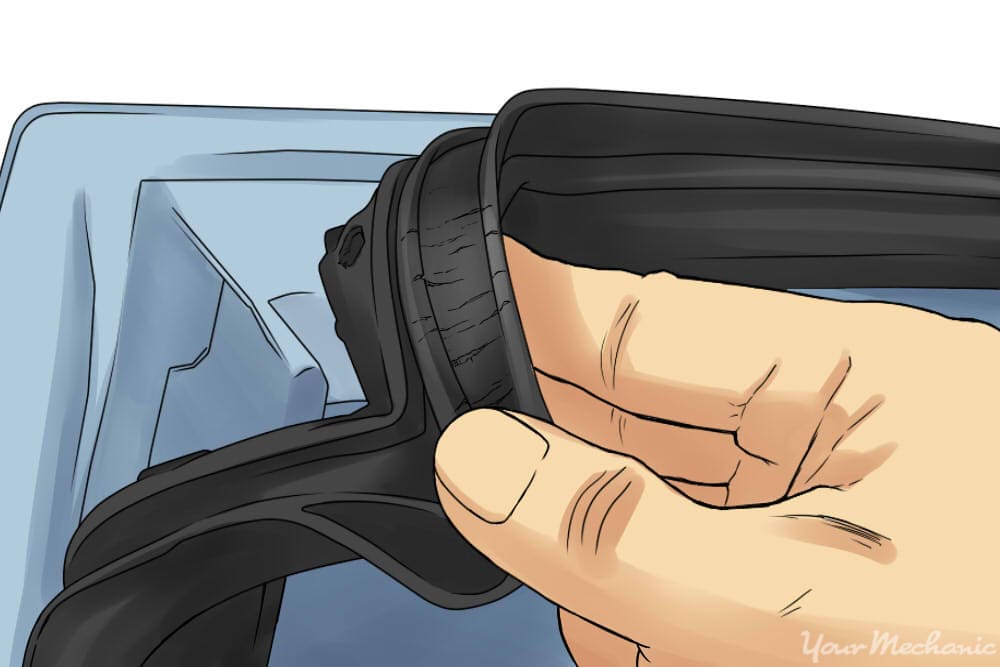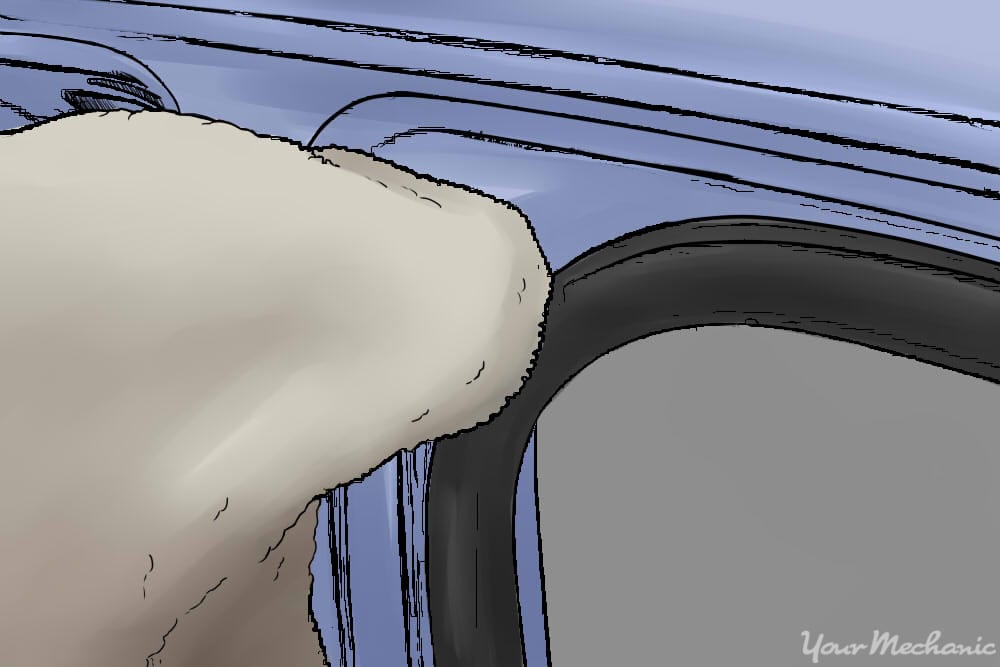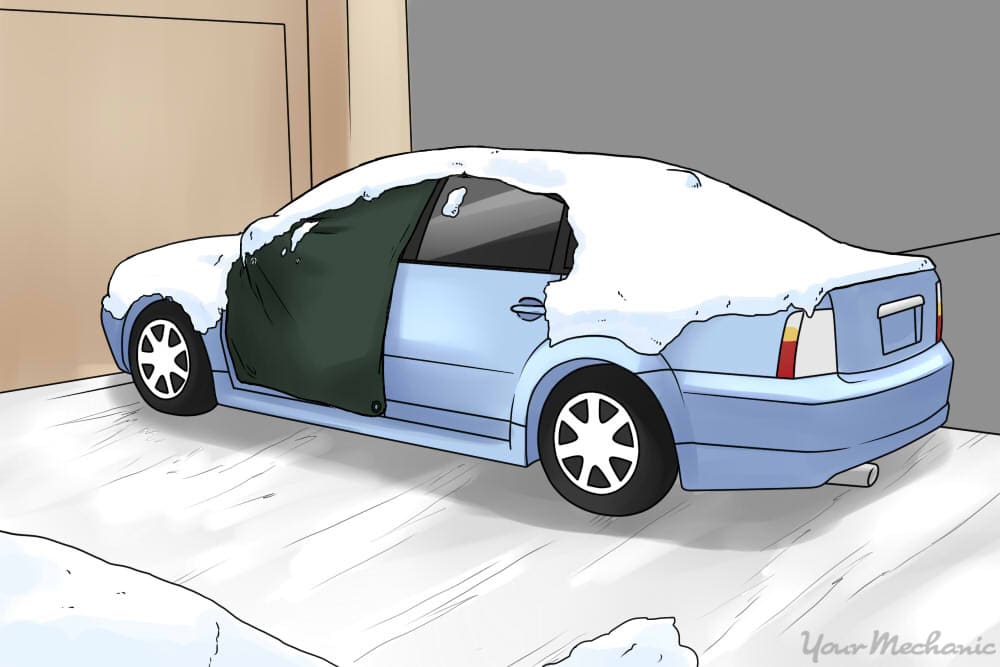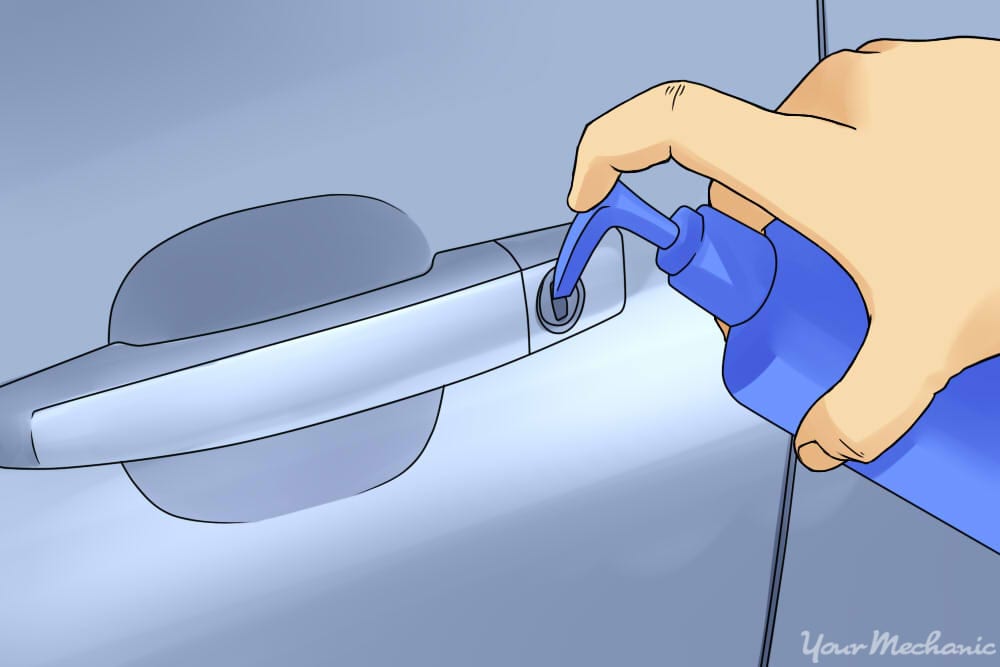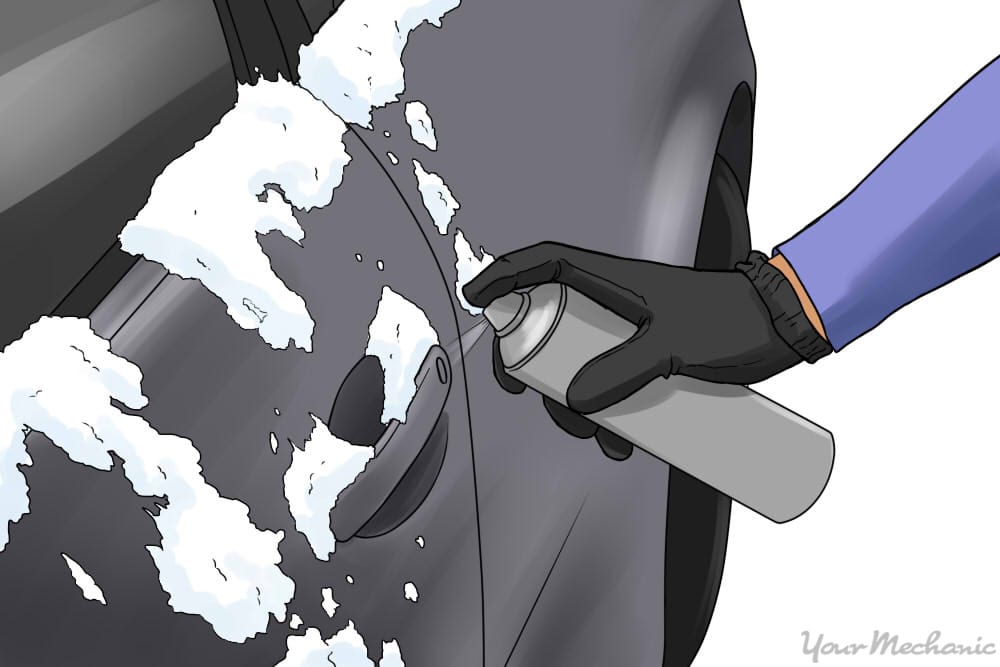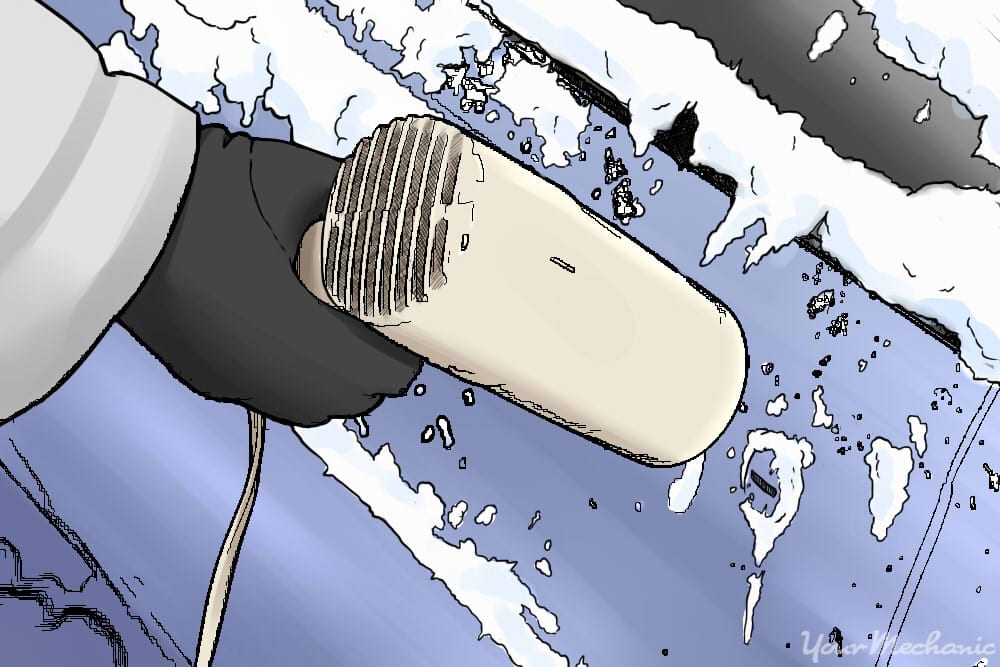

Cold temperatures and winter weather cause many issues with vehicles. One problem that is preventable is when car doors are frozen shut. It can take several minutes or even longer to open your car doors once they have frozen.
Water from precipitation and cold temperatures are the usual culprits. Put your car in a garage or cover it when rain or snow is predicted to prevent water from freezing your doors shut. If the cold temperature is the problem or you don’t have access to a garage or cover, follow these steps to prevent the doors from being frozen.
Part 1 of 6: Inspect worn gaskets
A worn or torn gasket between the car door and the frame is one likely culprit that can cause your vehicle door to become frozen shut. Visually inspecting and replacing a damaged gasket helps prevent this from happening.
Step 1: Look at the gaskets along the doors. Check for any tears in the gaskets where water could get in. This is usually where it freezes and prevents the door from opening.
Step 2: Inspect for gaps or tears. Have the gasket replaced if you notice gaps or tears. You can either do this yourself or have an experienced mechanic do it for you.
Part 2 of 6: Clean the door frame
Materials Needed
- Bowl
- Microfiber towel
- Warm water
Sometimes dirt and other debris gets into the frame of the door, preventing the gasket from making a good seal. This, in turn, lets in water that can freeze the door shut and make it difficult to open.
Step 1: Wash off the door frame. Use a clean cloth and warm water to wipe down the door frame. This helps to remove dust and debris from the road that often allows water to collect.
Step 2: Collect excess water. Follow with a dry cloth to make sure no water residue is left behind. This is to make sure no water is left behind that can freeze.
Part 3 of 6: Apply protective liquid
Materials Needed
- Clean cloth or paper towels
- Lubricant (silicon spray such as 3M)
In addition to repairing the gasket, you can also apply lubricant to keep the rubber of the gasket in good shape. As a gasket ages, it dries and becomes cracked. A good lubricant should help prevent this.
Step 1: Buy car lubricant/oil. Purchase an oil or lubricant safe for rubber and car parts. A silicone spray or rubber conditioner makes a great lubricant for vehicle door gaskets.
Step 2: Cover rubber seals with the lubricant. Apply the lubricant with a paper towel or clean cloth. Cover the rubber seals around the door.
- Warning: While some people use WD-40, it isn’t recommended because it can cause the seals to harden and wear out sooner. A rubber conditioner is considered to be the safest and longest-lasting.
Part 4 of 6: Cover your car
Materials Needed
- Tarp or car cover
While cleaning, lubricating, and replacing your gaskets represents a good way to keep your car doors from freezing shut, another method includes covering your vehicle to keep away moisture altogether. You can use a tarp or car cover to keep snow and rain off of the vehicle when the weather turns cold.
Step 1: Cover the driver side door. Use a tarp or plastic cover and cover at least the driver side door. You can also use a large trash bag to protect this area. Make sure the material you choose is heavy-duty to prevent it from tearing from the wind or heavy weight of ice or snow.
Part 5 of 6: Protect your door locks
Materials Needed
- Lubricant (silicone spray)
- Microfiber towel
- Petroleum jelly (in a pinch)
- Rubbing alcohol
Your door seals aren’t the only area susceptible to freezing temperatures. Door locks can also get water inside them which freezes and prevents the door from unlocking. The best time to apply a door lock lubricant is before they become frozen.
Step 1: Coat your key with rubbing alcohol. Apply rubbing alcohol with a cloth to the key if you have a manual unlocking door. You may also use petroleum jelly, but this can be messy.
Step 2: Use lock lubricant on the lock. Apply a lubricant for locks into the keyhole. Greaseless products are the safest choice because they won’t attract dust which can also inhibit your lock from working.
- Tip: Never combine products because they can stick together and gum up the lock to prevent it from working at all.
Part 6 of 6: Dealing with frozen locks
Materials Needed
- De-icer (recommended: Victor v500 Lock De-Icer)
- Hair dryer
Once your locks are frozen, you have a few options to choose from. Two of these are using a de-icer or a hair dryer.
Step 1: Apply de-icer to the lock. Spray a de-icer in the locks, which will usually begin working within seconds of application.
Step 2: Warm up the keyhole with a hair dryer. Use a hair dryer if you don’t have a de-icer. Hold it a few inches from the keyhole and give it time to work. This method isn’t as effective as other options, but it can work with time if you don’t have an alternative.
Opening a frozen-shut vehicle door is easy when you know how to do it. Sometimes, though, the problem lies with the door-locking mechanism itself. In this case, have one of our expert mechanics perform a door lock cylinder replacement to fix your problem and get you back on the road.



